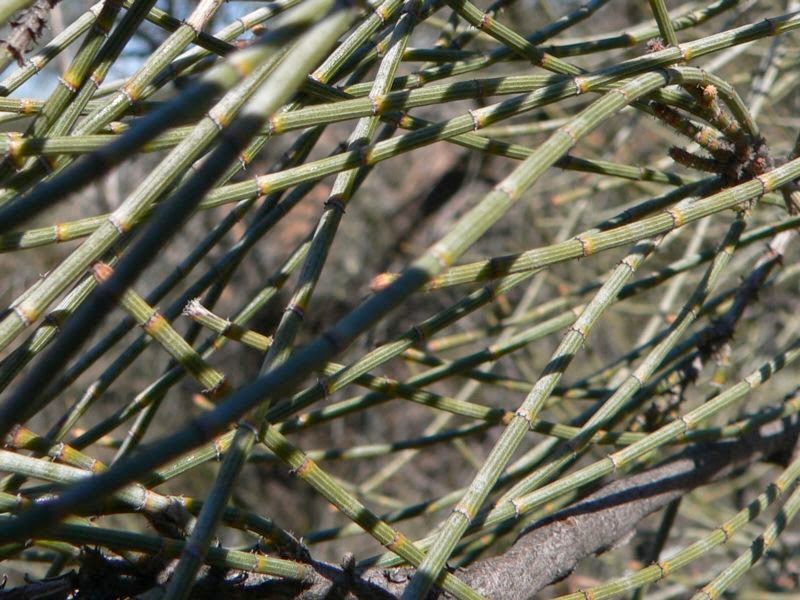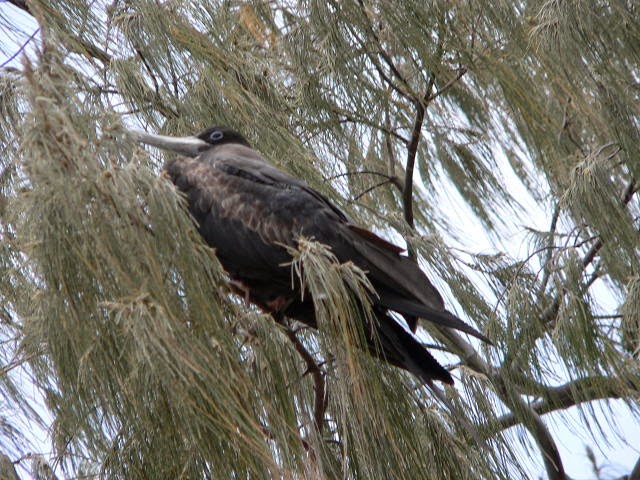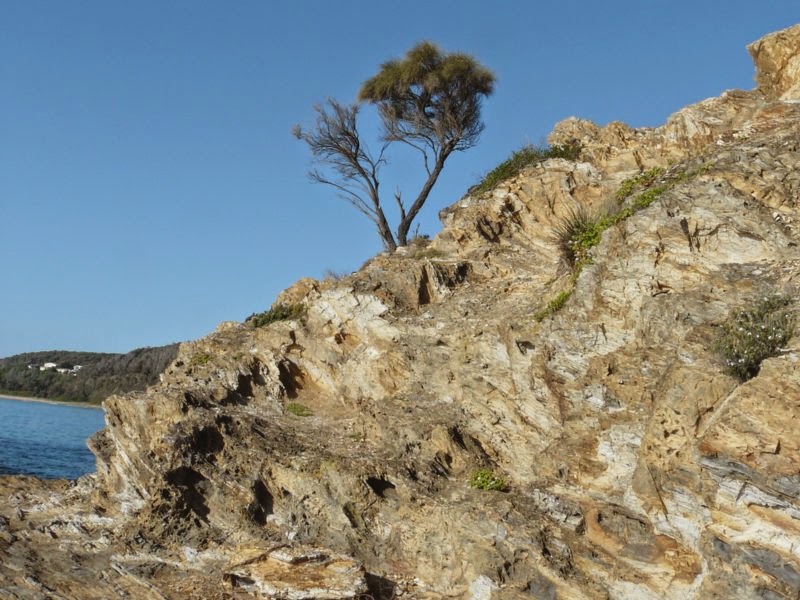This is the latest in an irregular series on some of my favourite trees, of which there is no shortage. The most recent instalment was here, from where you can follow back if you wish.
Sound doesn't usually feature heavily in talking about plants, but casuarinas are different. The inside of a grove of casuarinas whispers; it's like standing surrounded by aeolian harps.
The reason for the whispering lies in the foliage, which superficially resembles pine needles; indeed people often mistake them for pines. These 'needles' however are branchlets; look closely and you'll see that each branchlet (or cladode technically, for branches which perform a plant's photosynthetic function) is ringed with tiny teeth. These teeth are the remnants of the leaves, presumably reduced to contain water loss in their often arid environment.
 |
| Belah cladodes and leaflets, White Dam Conservation Park, South Australia. If you enlarge the photo the rings of leaflets are quite obvious. |
Australia though is only relatively recently a dry continent, so where did drought-resistant casuarinas come from? I think the answer to that lies in their distribution; while Australia is their stronghold, with some 70 of the roughly 100 species, they are found throughout the western Pacific. Seashores are one of the most ferociously droughted habitats, irrespective of rainfall - plants must effectively compete with soil salt for water. (This is a bit crude, but it'll do for our current requirements.) A plant like a casuarina which evolved on the shore would be pre-adapted to living in the dry inland as the country dried out.
Some species of course have never left the shores. Horsetail Casuarina (or Sheoak - we'll come back to that name in a while) Casuarina equisitefolia is found on beaches from south-east Asia to north-eastern Australia.
%2BLEI%2B1105.jpg) |
| Horsetail Casuarina (and male Great Frigatebird!), Lady Elliot Island, Queensland. |
We can get a hint from the previous picture (the Horsetail Casuarina) too as to why the great Linnaeus used the name Casuarina when he based the genus on this species; he thought the foliage resembled the hairy-looking plumage of the Cassowary! Personally I think he worked too many late nights...
In the late 1980s the late and highly respected Lawrie Johnson of the Royal Botanic Gardens, Sydney, split the hitherto single genus Casuarina into four; two of those genera are relatively small and barely represented in Australia (by one very restricted tropical Queensland species) but Allocasuarina, distinguished most obviously by larger and knobbier fruits, now represents more than half of what were previously Casuarina. Not everyone is happy with this change, but most authorities go along with it. I use 'casuarina' in lower case as a group name for the family.
I mentioned that casuarinas are quite pine-like at first glance, but they are legitimate flowering plants. As they are wind-pollinated however the flowers are fairly inconspicuous. Moreover most species have separate male and female plants (that is, they are dioecious); the rest have separate male and female flowers on the one plants (monoecious).
 |
| Scrub Sheoak Allocasuaria distyla female flowers and cones, Morton NP, New South Wales. |
 | |
| Black Sheoak A. littoralis male flowers Nowra, New South Wales. |
The name sheoak is of vexed origin. It is widely supposed to be an indication that the timber was regarded by early British settlers here as of inferior quality to that of European oak, but I'm not at all convinced. I believe it is one of the many names of indigenous origin which later became anglicised as the origin was forgotten, and a new back-filling origin created. I have several bases for this belief, all of them of course circumstantial (as is the traditional explanation). For one thing the wood was actually valued quite highly. The Sydney Gazette of 1803 reported that "This wood is allowed to rank in Europe with the mahogany of Jamaica." That wood was very highly prized for furniture in particular. I point too to the occasionally encountered form shiock, and the existence of the name buloke for some inland species (notably C. luehmanii) - surely too much of a coincidence? Moreover the term he-oak is also found, though there is no suggestion the timber of these species is superior. And I find convincing the evidence of Richard Howitt, who in his book Impressions of Australia Felix in 1845 wrote quite explicitly "Shiac is the native name - vulgarised to she-oak".
I don't doubt that some readers will be quite sure I'm wrong - and they may be right, though I think we can agree that we'll never be entirely certain.
To wrap up, here are some more casuarinas, which I hope you can enjoy as much as I do.
| Desert Oak Allocasuarina decaisneana at sunset, Uluru, central Australia. More on this wonderful species here. |
| Allocasuarina huegliana Boyagin Rock, Western Australia. |
 |
| Drooping Sheoak Allocasuarina verticillata, above and below. Above, Rosedale, New South Wales. Below, Freycinet NP, Tasmania. |
| River Oaks Casuarina cunninghamiana, Deua NP, New South Wales. This species always grows along near-coastal stream lines, forming riverine forests. |
Thanks for bearing with me; I hope you can enjoy a casuarina soon.
BACK ON WEDNESDAY
%2BGawler%2BR%2BNP%2B0907.jpg)





















